
Lizards Around Las Vegas, Wildlife Around Las Vegas
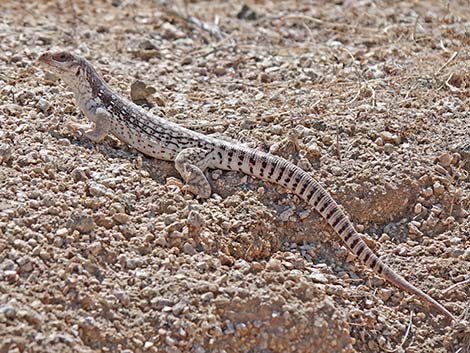 |
General Description: Desert Iguanas (Dipsosaurus dorsalis) are large, light-colored lizards with a long tail and a small head. The back is variously spotted and striped, while the tail is barred. Taxonomy: Iguana Family (Iguanidae). Technical Description: A large (total length 12 to 16 in.), pale, round bodied lizard with a long tail and a relatively small head. The overall body color is light: cream colored with a brownish net-like pattern and gray or whitish spots on the head and neck. A row of slightly enlarged scales can be seen on the midline of the dorsum. This species can be recognized from other species of large lizards in southern Nevada by the light coloration (other species would be dark colored or would have dark markings) and the enlarged mid-dorsal scales. Diet: Primarily eats vegetation such as creosote bush flowers, sand verbena flowers, and other shrubs, flowers, and fruit. Also eats carrion and insects. |
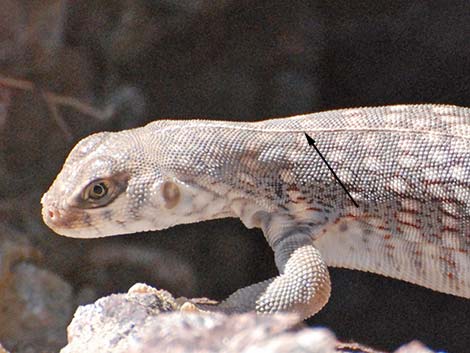 Crest of elongated scales (black arrow), as seen in other iguanas |
Habitat: Creosote-Bursage Flats and Mojave Desert Scrub habitat types with sandy hummocks, mesquite, and salt desert scrub habitats, also rocky stream beds, bajadas, and rocky hills below 5,000 ft elevation. Range: Southwestern deserts from southern Nevada southward into western Mexico. In Nevada, the range of this species is similar to that of its principal food: the creosote bush, and in Clark County, this species is widespread in lower-elevation sandy habitats. Breeding: Similar Species: No other lizard in our area has this white with black pattern. Comments: Tolerant of hot weather, these lizards can remain active and above ground on hot days after other species seek cooler temperatures underground. |
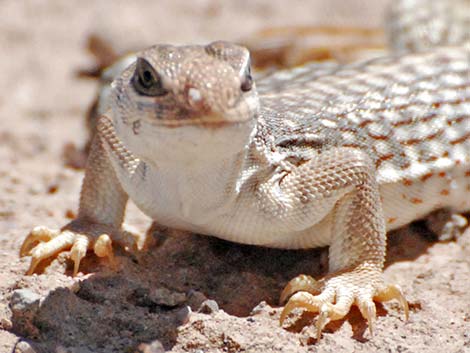 |
If you were a tasty leaf or a colorful flower petal, this might be the last face you ever see! |
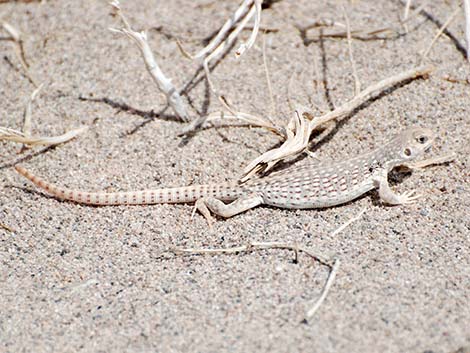 |
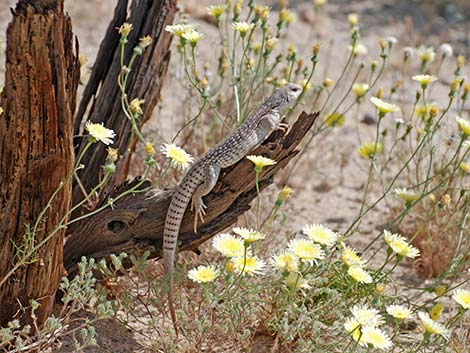 |
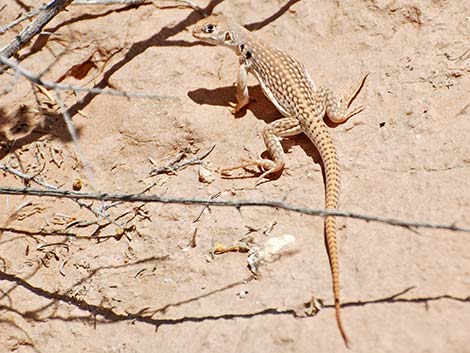 |
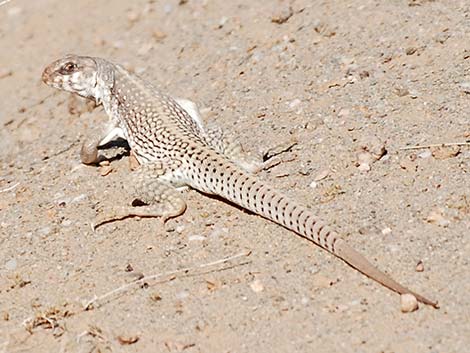 |
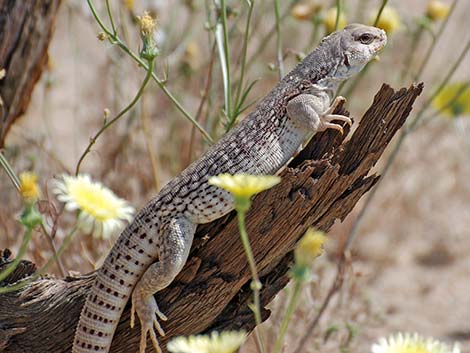 |
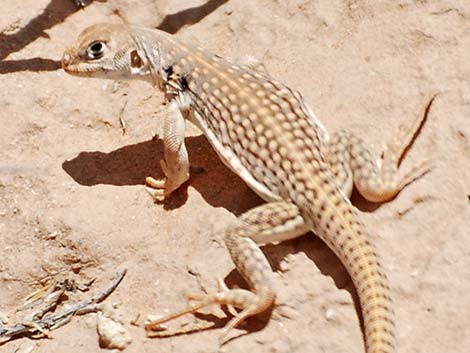 |
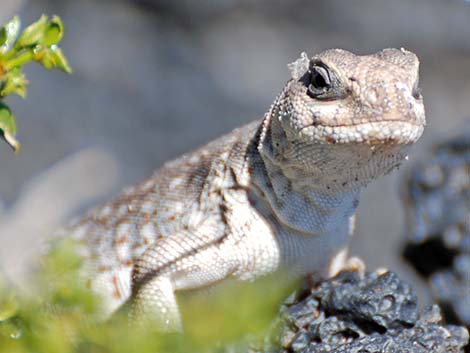 The one that got away seems to have a big grin on her face! |
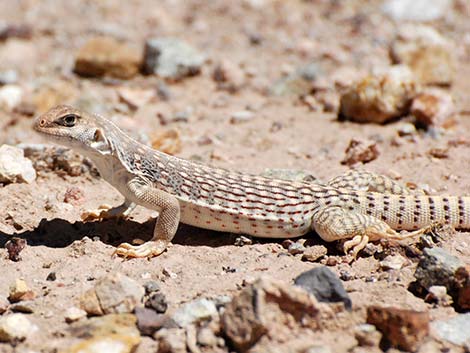 Desert Iguana |
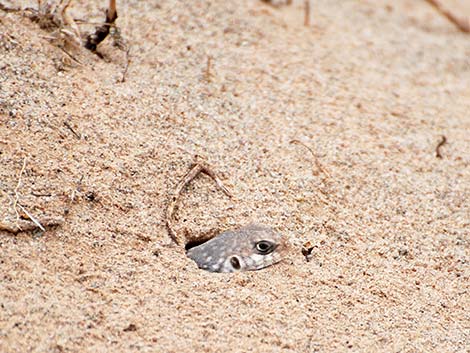 Desert Iguanas can dig their own burrows, here in a sand dune |
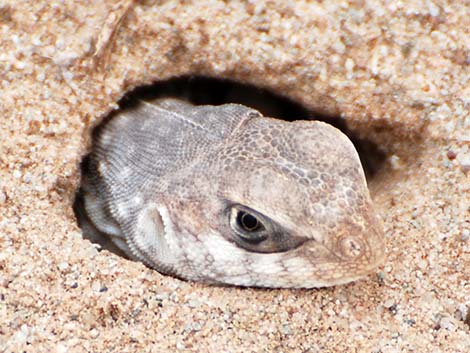 Desert Iguana at the entrance to its burrow |
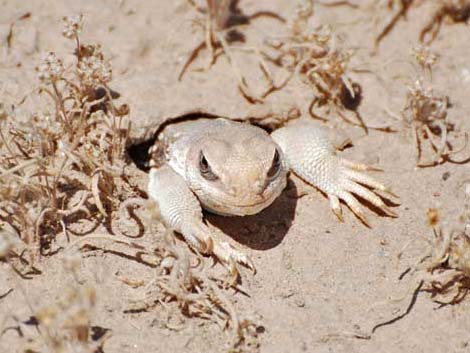 Desert Iguana at the entrance to its burrow |
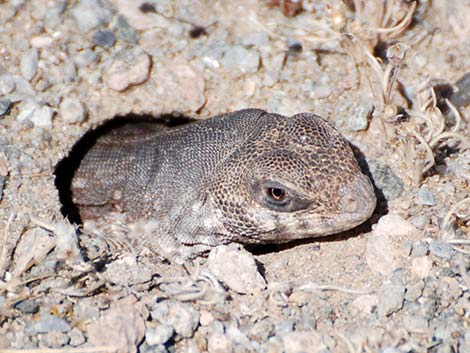 Basking in the morning sun at burrow entrance |
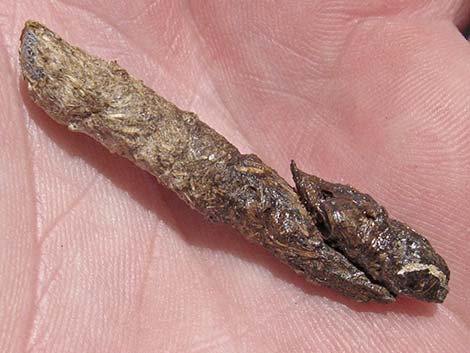 Desert Iguana scat |
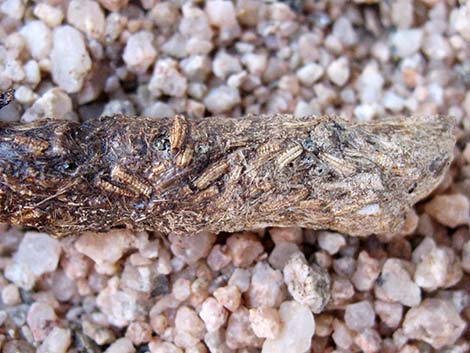 Desert Iguana scat contains plant parts |
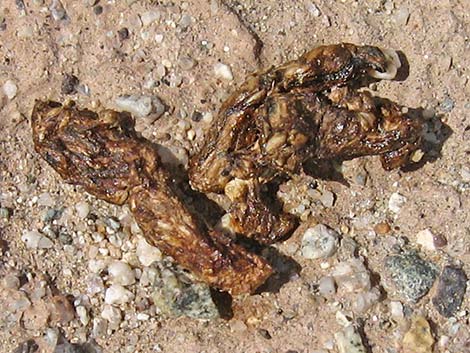 |
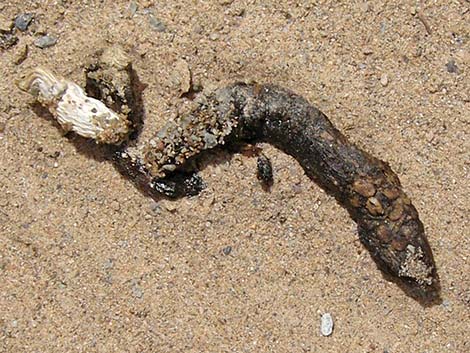 |
Note: All distances, elevations, and other facts are approximate.
![]() ; Last updated 231213
; Last updated 231213
| Lizards Around Las Vegas | Wildlife Around Las Vegas | Glossary | Copyright, Conditions, Disclaimer | Home |